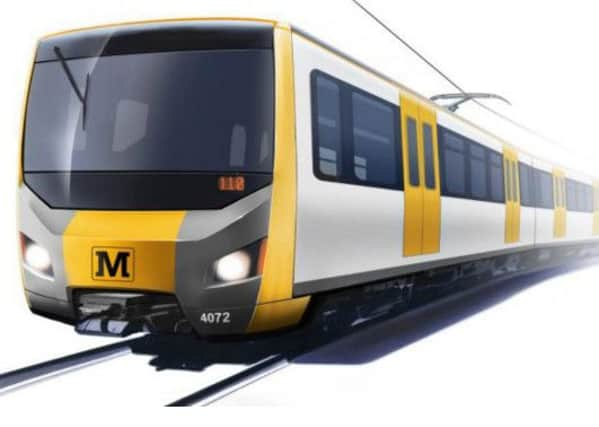Metro bosses unveil plans to extend network, including direct link between Sunderland and South Tyneside


The scheme - to be presented to the North East Combined Authority (NECA) - could see a direct link between Sunderland and South Tyneside and the network extended as far as Washington and Peterlee.
Passenger transport executive Nexus says it can cut costs by bringing the region’s disused railways - including the mothballed Leamside Line - back into use.
Advertisement
Hide AdAdvertisement
Hide AdA report is due to go before NECA’s Transport North East committee at Sunderland Civic Centre this afternoon.
“Our industrial heritage has left behind it a network of disused railways that thread across the region,” says the report.
“Some are former passenger lines, although many are freight routes connecting mines and factories to ports. As new developments take place around them, some will once again become important transport arteries, helping to move people around the North East along unobstructed, uncongested route corridors.
“Nexus believes that existing and disused local rail corridors can be combined with the Metro network to create a single Metro and local rail network, at a lower cost than new-build railways. There are also a number of areas where the existing Metro network can be upgraded to create a more effective service.”
Advertisement
Hide AdAdvertisement
Hide AdSome of the proposals are relatively simple and could be achieved within five years, while others would take far longer to complete.
Plans include:
Sunderland City Centre to Doxford Park
Using the former Hetton Colliery railway which once transported coal to the banks of the Wear could substantially reduce congestion around the busy business park. Most of the route between Doxford and the city centre is free from development but routes beneath or over Durham Road and Premier Road would need to be constructed, as well as a means of connecting with the existing Metro network west of University.
New Routes from South Tyneside
South Tyneside is already covered by the Metro network, but there are no direct links between the borough and the south of the area by rail .
The South Shields and Sunderland Metro routes are within 3km of each other in the Tyne Dock and Brockley Whins area and running between them is a single-track freight branch serving Port of Tyne from a junction east of Brockley Whins. Linking the two lines would also open up the possibility of direct journeys between Shields and the new International Advanced Manufacturing Park (IAMP) near Nissan, Washington and even on to Durham Belmont, through the construction of a new spur heading south before the Pelaw junction.
Wearside Loop
Advertisement
Hide AdAdvertisement
Hide AdThe re-use of former rail lines offers the potential to deliver a circular Metro-style service covering Sunderland and Washington.
The existing route from South Hylton could be extended westwards towards Penshaw using a former mineral line, and then connected with the Leamside line heading northwards through Bensham.
The ‘Leamside line’
The disused Leamside line runs from Pelaw Junction to Ferryhill in County Durham, and passes through a number of locations that currently lack rail services, especially Washington. Another disused route, running west from the current Metro terminus at South Hylton, joins the Leamside line just south of the river Wear. The Leamside line could be used to develop direct local links between the Durham park and ride at Belmont, Fence Houses and Penshaw.
Sunderland re-electrification
Nexus believes the best long-term approach is to convert the electrification of the Sunderland line to the Network Rail standard of 25kv AC, making it make it easier and more cost effective for Network Rail to maintain and manage. Electrification south from Sunderland, through Ryhope and Seaham towards Horden and Peterlee would allow these areas to be served by a Metro-style service.
South Tyneside ‘Track Dualling’
Advertisement
Hide AdAdvertisement
Hide AdThe Metro system has a lengthy section of single track between Jarrow and Pelaw which limits the timetable that can be offered, severely hampers recovery when disruption occurs, and limits growth – for example new stations cannot be placed on the single-track section. Most of this section has a single track Network Rail freight line running alongside it to the disused Jarrow Oil Terminal. Nexus believes that it should be possible to convert the freight-only line to be part of the Metro system.
The plans also include an outline business case for investment in a new train fleet and draft specifications for new rolling stock to be introduced in the early 2020s.
The cost of a fleet capable of replicating the current timetable is estimated to be around £300million, with an associated upgrade to the signalling system set to cost an additional £100million, updated depot facilities around £50million, and upgrades to the electrification adding a further £100million, bringing the total cost of new fleet to around £550million.